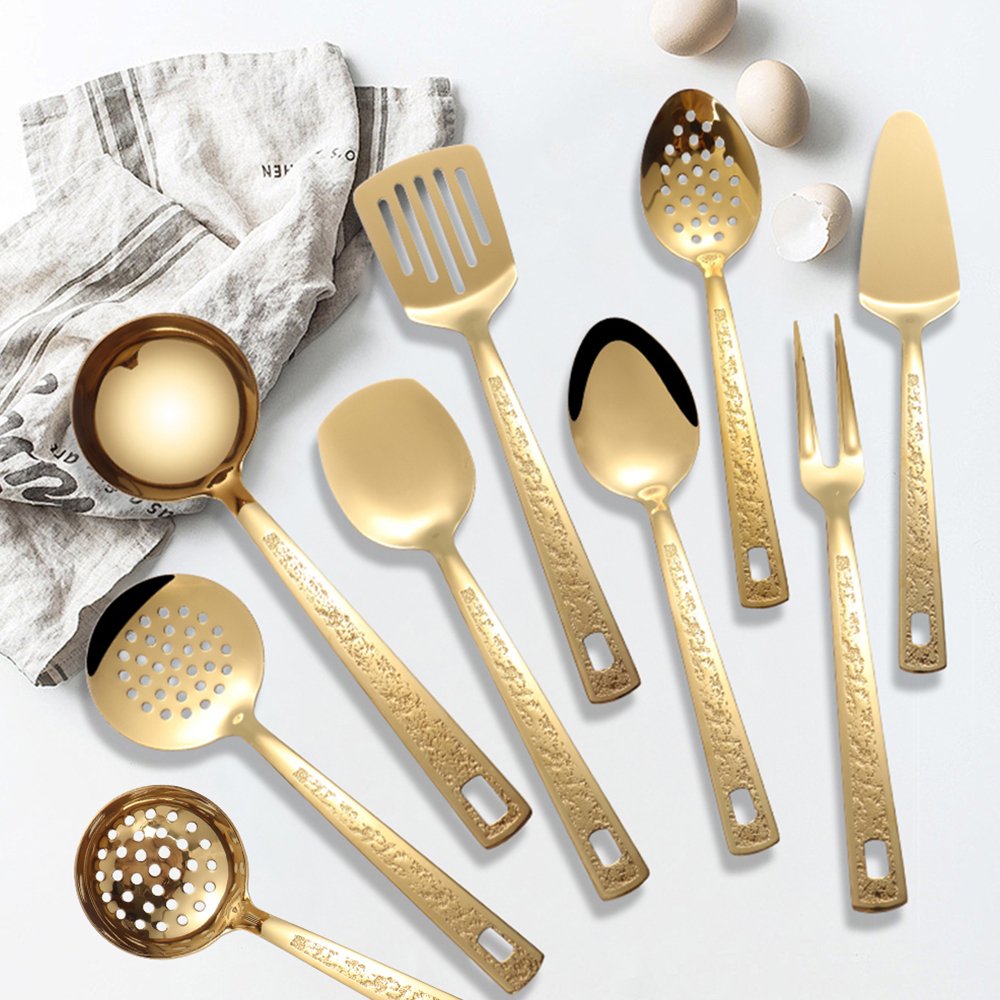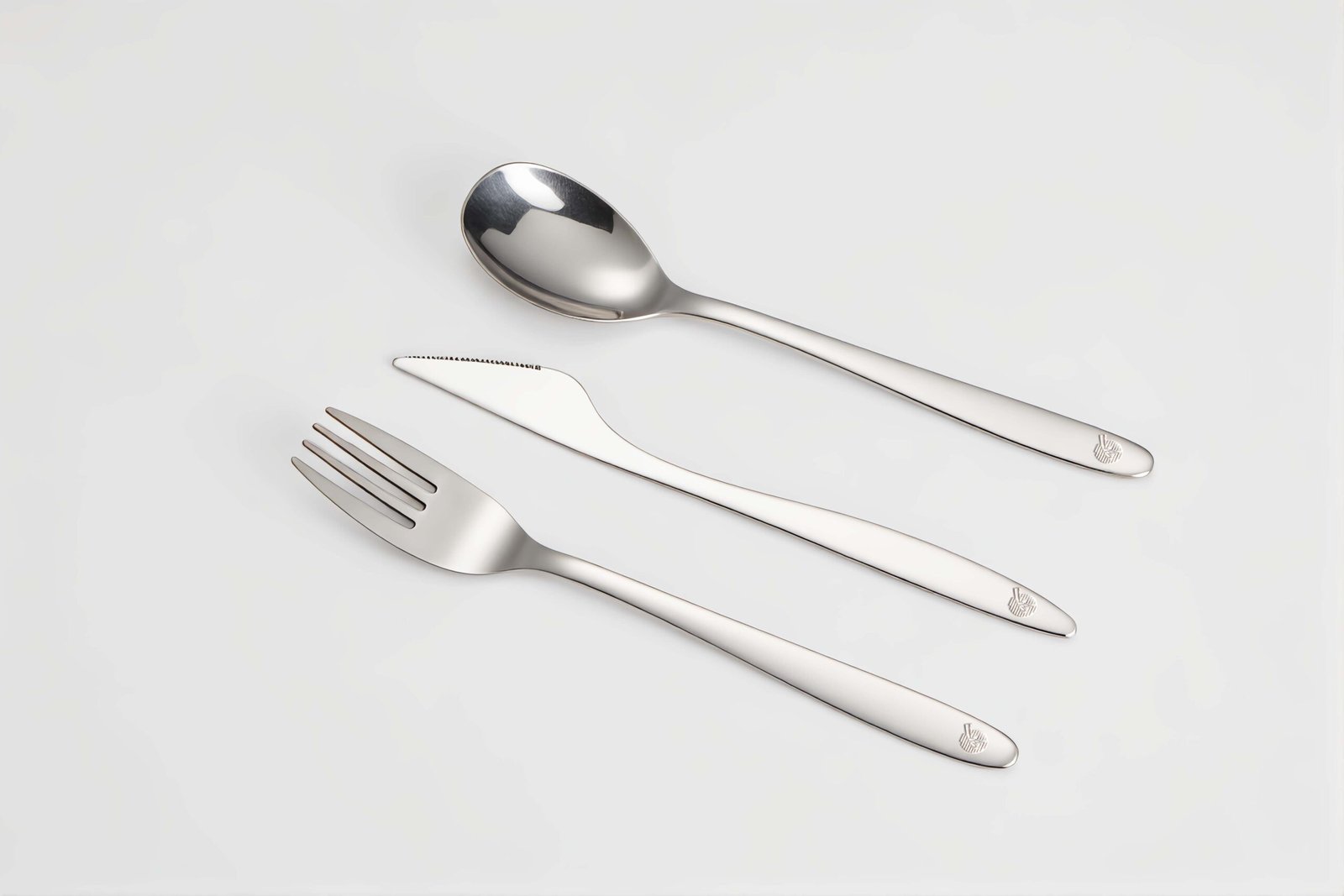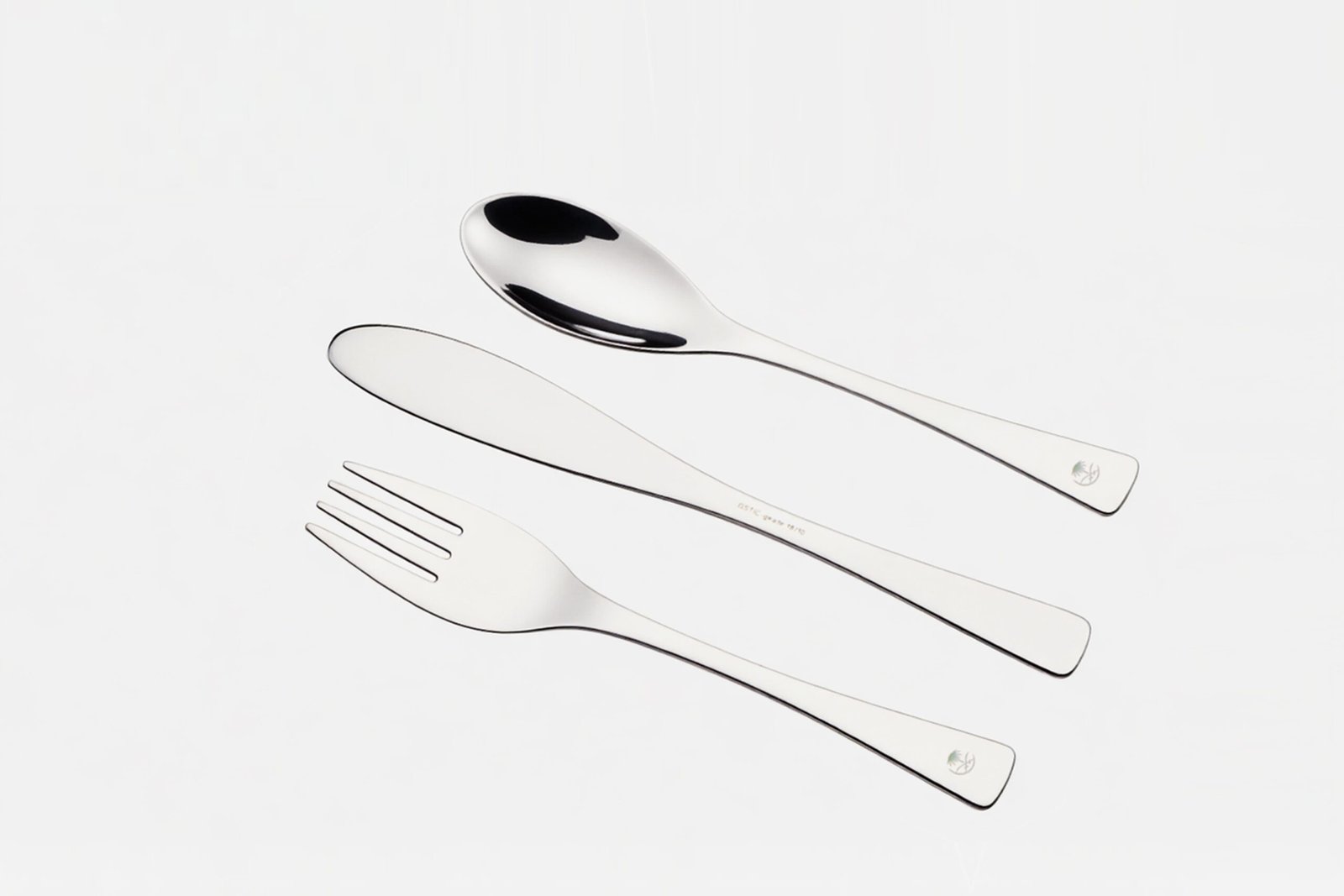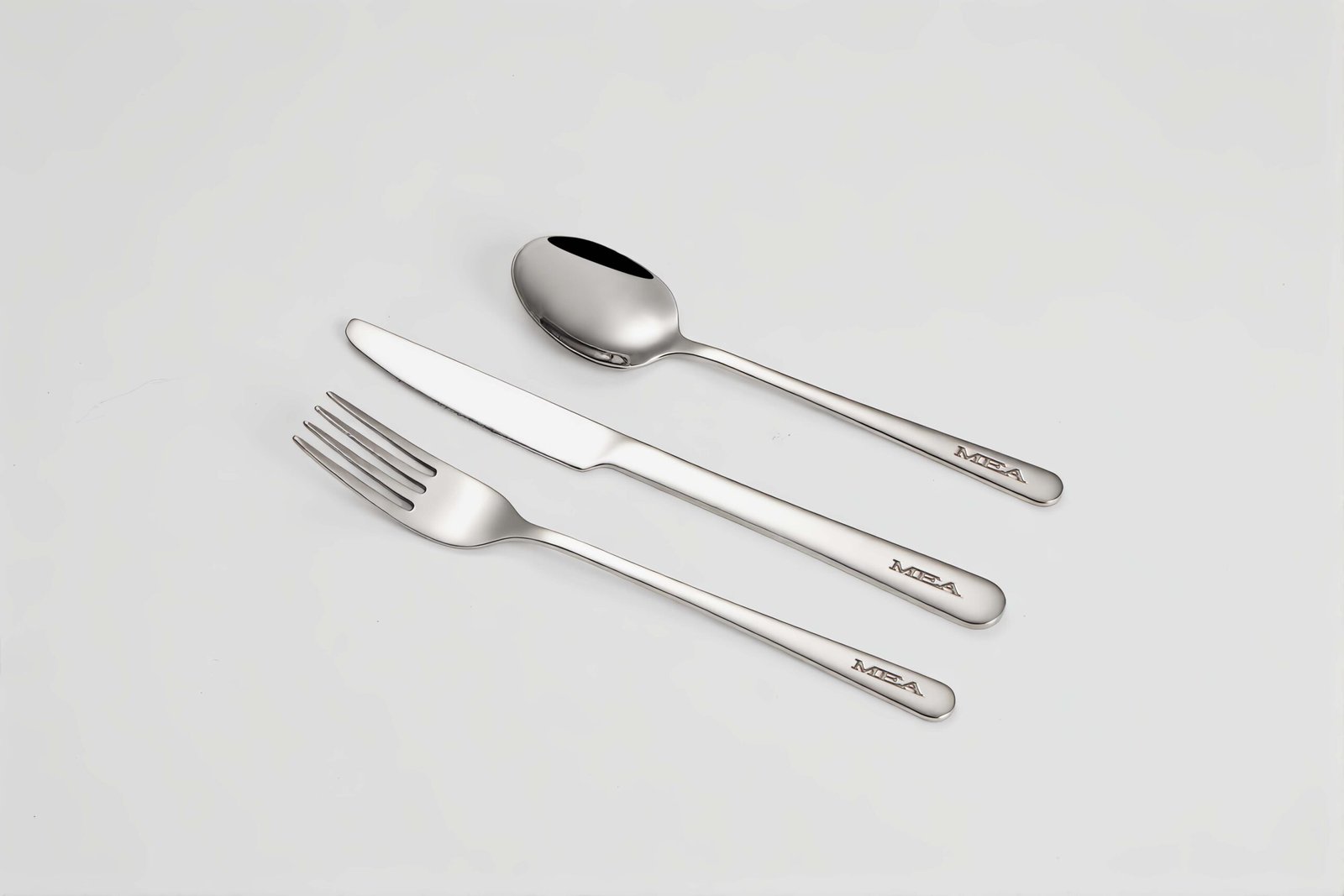Struggling with kitchen utensils that just don’t last? Choosing the wrong materials might ruin your cooking experience and even pose health risks.
Kitchen utensils can be crafted from materials like stainless steel, wood, silicone, plastic, glass, ceramic, bamboo, copper, aluminum, and cast iron, each offering distinct advantages and disadvantages for various kitchen tasks.
Knowing exactly what materials are suitable can make your cooking safer, easier, and more enjoyable. Let’s explore the different options together.
Table of Contents
What is the best material for kitchen utensils?
Tired of utensils breaking, melting, or staining easily? The right choice of material can save your cooking experience from frustration.
Stainless steel is widely regarded as the best material for kitchen utensils, due to its durability, resistance to corrosion, heat tolerance, easy maintenance, and overall safety for food preparation.
Why Stainless Steel is Highly Recommended
Stainless steel stands out for many reasons. Firstly, it’s strong enough for daily cooking tasks, doesn’t rust or corrode easily, and can withstand high temperatures. These qualities make it perfect for tools like spatulas, spoons, and knives. However, stainless steel isn’t always perfect. Let’s critically examine its benefits and downsides.
Advantages of Stainless Steel
| Advantages | Explanation |
|---|---|
| Durability | Can withstand heavy use without bending or breaking |
| Corrosion-resistant | Doesn’t easily rust, even with frequent washing |
| Easy to clean | Dishwasher-safe and simple to maintain |
| Safe for food | Non-reactive, doesn’t affect food taste or quality |
Disadvantages of Stainless Steel
| Disadvantages | Explanation |
|---|---|
| Heat conduction | Handles can get hot, causing burns if not careful |
| Scratches pans | Metal tools can damage non-stick cookware |
| Costly | Quality stainless steel utensils may be expensive |
As a designer and marketer in this field, I always advise customers to balance their budget and needs. Stainless steel is generally safe and effective, but if non-stick cookware is mainly used, silicone or wooden utensils might complement stainless steel better.

What materials can be used to make the object utensils?
Ever wondered why some utensils deform after a few uses? Selecting the right materials can ensure your utensils stay functional and attractive.
Common materials for object utensils include stainless steel, silicone, plastic, bamboo, ceramic, wood, copper, glass, aluminum, cast iron, and even composites like nylon, each serving specific cooking needs.
Exploring Material Choices
Let’s critically compare several common utensil materials and their suitability for different kitchen utensils.
Material Comparison for Object Utensils
| Material | Best Used For | Advantages | Disadvantages |
|---|---|---|---|
| Silicone | Spatulas, turners, baking tools | Heat-resistant, gentle on cookware | May discolor, less sturdy |
| Wood/Bamboo | Spoons, spatulas, salad servers | Gentle on pans, natural appearance | Can absorb odors, not dishwasher-safe |
| Plastic/Nylon | Spatulas, measuring tools | Lightweight, inexpensive | May melt or warp with heat, less durable |
| Ceramic/Glass | Bowls, serving spoons | Non-reactive, attractive | Easily breakable |
| Copper | Measuring spoons, saucepans | Excellent heat conduction | High maintenance, expensive |
When choosing materials, always consider the purpose. Silicone is ideal for baking, while wooden utensils prevent scratching pans. Plastic is practical but may warp. Balancing these aspects will help you make informed decisions.
What kitchen utensils can be improvised?
Caught without the right utensil in the middle of cooking? Knowing how to improvise can save your dish and your sanity.
Common kitchen utensils you can improvise include using forks as whisks, mason jars as measuring cups, plates as cutting boards, and mugs as rolling pins or cookie cutters.
Creative Utensil Improvisation
In my experience, improvisation can stimulate creativity in cooking. Let’s critically analyze several improvisations and their effectiveness.
Effective Utensil Substitutions
| Missing Utensil | Improvised Solution | Pros | Cons |
|---|---|---|---|
| Whisk | Fork | Easily available, effective for eggs | Not efficient for thick batter |
| Measuring Cup | Coffee Mug | Convenient and simple | Less accurate |
| Cutting Board | Plate or Tray | Available in every kitchen | Can damage plates |
| Rolling Pin | Wine Bottle | Heavy, smooth surface | Risk of slipping or breaking |
| Cookie Cutter | Drinking Glass | Uniform shapes | Limited to round shapes |
Improvisation works best as a temporary solution. Regular improvisation may impact cooking quality or utensil safety. Thus, having basic utensils is still ideal, but creativity can overcome temporary gaps effectively.
What material is most often used to make kitchen tools and equipment?
Confused by the overwhelming options available? Knowing the most commonly used material can simplify your choice significantly.
Stainless steel is the material most frequently used for kitchen tools and equipment because of its versatility, durability, ease of maintenance, and overall food safety.
Dominance of Stainless Steel
Almost every commercial and household kitchen relies heavily on stainless steel. Let’s critically evaluate its widespread popularity.
Reasons for Stainless Steel Popularity
| Factor | Explanation |
|---|---|
| Versatility | Suitable for almost all kitchen tools |
| Hygiene | Easy to sanitize and clean |
| Durability | Withstands heavy use and high temperatures |
| Appearance | Professional and clean look |
| Cost-effective | Durable, offering good long-term value |
However, stainless steel isn’t always the best for every purpose. For delicate cookware, it can cause damage. Alternatives like silicone or wooden utensils are valuable additions in such scenarios.
What are toxic free kitchen utensils?
Worried about potential toxins in your cooking utensils? Choosing toxin-free materials is essential for your family’s health.
Toxin-free kitchen utensils include those made from stainless steel, bamboo, glass, ceramic, silicone, and cast iron, which do not leach harmful chemicals during cooking.
Choosing Toxin-Free Options
Let’s critically assess popular toxin-free materials, highlighting their safety.
Toxin-Free Material Analysis
| Material | Pros | Cons |
|---|---|---|
| Stainless Steel | Durable, no chemical leaching | Can scratch non-stick pans |
| Bamboo/Wood | Natural, eco-friendly | Can harbor bacteria if not well-maintained |
| Silicone | Non-reactive, safe at high temps | Lower durability, discoloration |
| Glass/Ceramic | Completely inert, very safe | Fragile and prone to breakage |
Using toxin-free utensils minimizes health risks. However, even these materials must be properly maintained to ensure continued safety and hygiene.

What are toxic free kitchen utensils?
Concerned about toxic chemicals leaching into your food from utensils? Choosing the right materials ensures your cooking stays safe and healthy.
Toxic-free kitchen utensils include stainless steel, wood, bamboo, silicone, ceramic, glass, and cast iron. These materials don’t release harmful chemicals or toxins when cooking or heated.
Understanding Toxic-Free Materials
Picking toxin-free utensils isn’t only about safety. It’s also about reliability, ease of use, and practicality in daily cooking. Let’s explore each material critically to understand their strengths and weaknesses.
Analysis of Toxic-Free Kitchen Utensil Materials
| Material | Pros | Cons | Recommended Uses |
|---|---|---|---|
| Stainless Steel | Durable, doesn’t rust, easy to clean | Scratches non-stick pans, heat transfer | Spatulas, ladles, whisks |
| Wood/Bamboo | Eco-friendly, gentle on cookware, natural look | Absorbs odors, difficult to sanitize | Spoons, spatulas, salad servers |
| Silicone | Heat resistant, flexible, safe for non-stick | Can discolor, less sturdy, not very firm | Baking spatulas, cooking tongs |
| Ceramic | Non-reactive, safe under heat, attractive | Fragile, breaks easily | Serving spoons, decorative dishes |
| Glass | Completely inert, chemical-free, transparent | Highly breakable | Measuring cups, mixing bowls |
| Cast Iron | Naturally non-stick, very durable, safe | Heavy, requires careful cleaning | Skillets, grills, pans |
Critically Evaluating Toxic-free Materials
When advising clients on kitchen utensils, I often emphasize balancing safety with practicality. For example, stainless steel utensils last long but aren’t ideal for non-stick pans. Wood and bamboo utensils are gentle but require regular maintenance and careful drying to prevent mold. Silicone utensils are flexible and great for baking, but might bend too easily during heavier cooking tasks.
Cast iron, although heavy and difficult to maintain, offers natural non-stick properties without chemical coatings, making it ideal for heavy-duty cooking. Glass and ceramic are excellent for mixing and serving but break easily.
Choosing toxic-free materials involves weighing these trade-offs. Stainless steel and silicone often come out on top for general daily use because they combine safety, durability, and ease of cleaning. Still, the final choice depends on the type of cooking you frequently do and the cookware you already own. This critical approach helps make sure you get the most suitable utensils for your specific kitchen needs.
What is the best metal to use for utensils?
Struggling with rusty or flimsy metal utensils that ruin cooking tasks? Choosing the best metal can significantly improve your cooking efficiency and utensil durability.
The best metal for kitchen utensils is stainless steel due to its durability, corrosion resistance, easy cleaning, non-reactivity, and overall safety for preparing food.
Comparing Metals for Kitchen Utensils
Stainless steel is usually my first recommendation. But let’s critically evaluate it alongside other popular metals like aluminum, copper, and cast iron to better understand their advantages and disadvantages.
Metal Utensil Comparison Table
| Metal | Advantages | Disadvantages | Ideal Uses |
|---|---|---|---|
| Stainless Steel | Durable, resistant to rust, easy care | Conducts heat, can scratch cookware | General utensils, spatulas, spoons, knives |
| Aluminum | Lightweight, excellent heat conduction | Reacts with acidic foods, scratches easily | Lightweight pots, pans, baking sheets |
| Copper | Superior heat conduction, visually appealing | High maintenance, expensive, reactive | Specialty pans, decorative serving utensils |
| Cast Iron | Retains heat, naturally non-stick, durable | Heavy, requires special cleaning, prone to rust | Skillets, frying pans, grills |
Evaluating the Best Metal Choice Critically
In my 10-year journey in the cutlery industry, stainless steel consistently emerges as the most balanced metal choice. Its strengths far outweigh the downsides. Stainless steel utensils don’t rust easily and are easy to sanitize. They’re strong enough for daily use and suitable for professional and home kitchens alike.
Aluminum utensils, despite being lightweight and affordable, often have drawbacks related to food safety. Acidic ingredients like tomatoes or citrus can react with aluminum, leading to metallic tastes or discoloration. Copper utensils are highly efficient at conducting heat but require regular polishing to maintain their appearance and are costly, making them less practical for everyday cooking.
Cast iron, while beloved by many chefs, is heavy and requires careful maintenance. It can rust if not dried properly, and its weight makes handling more challenging, especially for regular cooking.
Therefore, when advising professionals like Jacky, a seasoned German designer, I suggest stainless steel for both design flexibility and practicality in manufacturing. The material’s consistent quality, affordability, and durability provide an ideal solution for most kitchen utensil designs. My experience strongly supports stainless steel as the best overall metal for kitchen utensils.
What is considered serviceware?
Feeling unsure about the difference between kitchen utensils and serviceware? Understanding this clearly helps you pick suitable products for specific tasks.
Serviceware refers to items specifically used for serving food and beverages. This includes serving trays, bowls, platters, pitchers, teapots, salad servers, dessert plates, and related items.
Defining and Analyzing Serviceware
To better understand serviceware, let’s critically analyze it by clearly separating it from cookware and utensils.
Key Differences Between Serviceware, Cookware, and Utensils
| Category | Primary Purpose | Typical Items | Materials Often Used |
|---|---|---|---|
| Serviceware | Serving and display | Platters, trays, serving bowls, pitchers | Ceramic, glass, wood, stainless steel |
| Cookware | Cooking and heating | Pots, pans, skillets, grills | Stainless steel, cast iron, aluminum |
| Utensils | Food preparation | Knives, spatulas, whisks, tongs | Stainless steel, silicone, wood |
Critically Understanding Serviceware
Serviceware’s primary function is presentation. Unlike cookware or utensils, serviceware typically isn’t used for cooking or preparation. Materials chosen for serviceware often emphasize aesthetics over heat resistance or durability. However, practical serviceware must balance good looks with functionality, durability, and ease of cleaning.
Glass and ceramic items are attractive and elegant, ideal for formal dining but fragile. Stainless steel and wooden serviceware offer durability and ease of maintenance, suitable for everyday use. Designers like Jacky must balance visual appeal and functionality when creating serviceware, ensuring products not only look great but also perform well.
What is a serveware used for?
Unsure why certain items are labeled “serveware”? Clearly knowing their purpose can guide your kitchen choices effectively.
Serveware is used for serving food and beverages to guests or diners. Items such as platters, bowls, trays, salad servers, and pitchers are examples of serveware.
Serveware Uses and Selection Tips
Serveware enhances the dining experience by presenting food attractively. Let’s critically examine various types of serveware and their specific uses.
Types of Serveware and Their Uses
| Serveware Item | Typical Uses | Suitable Materials |
|---|---|---|
| Platters/Trays | Serving appetizers, meats, cheeses | Ceramic, stainless steel, wood |
| Bowls | Salads, soups, side dishes, sauces | Ceramic, glass, wood |
| Salad Servers | Serving and mixing salads | Wood, stainless steel, bamboo |
| Pitchers | Serving water, juices, cocktails | Glass, ceramic, stainless steel |
Designing serveware requires understanding user needs. Platters and trays must accommodate different dishes, while bowls should be versatile. Pitchers need ergonomic handles for easy pouring. Salad servers should have comfortable grips for efficient serving. Serveware designers must balance practicality with aesthetics, creating items that perform well and enhance table settings.
Choosing the right materials for kitchen utensils and serveware ensures safety, practicality, and beautiful dining experiences. Always align your selection with cooking needs and presentation goals.






